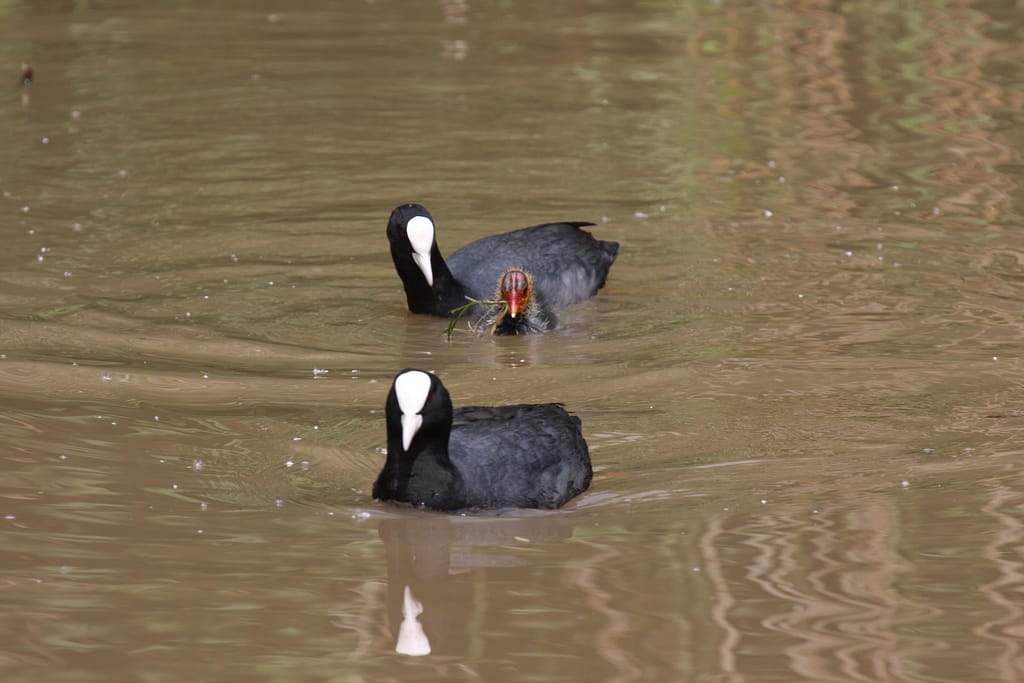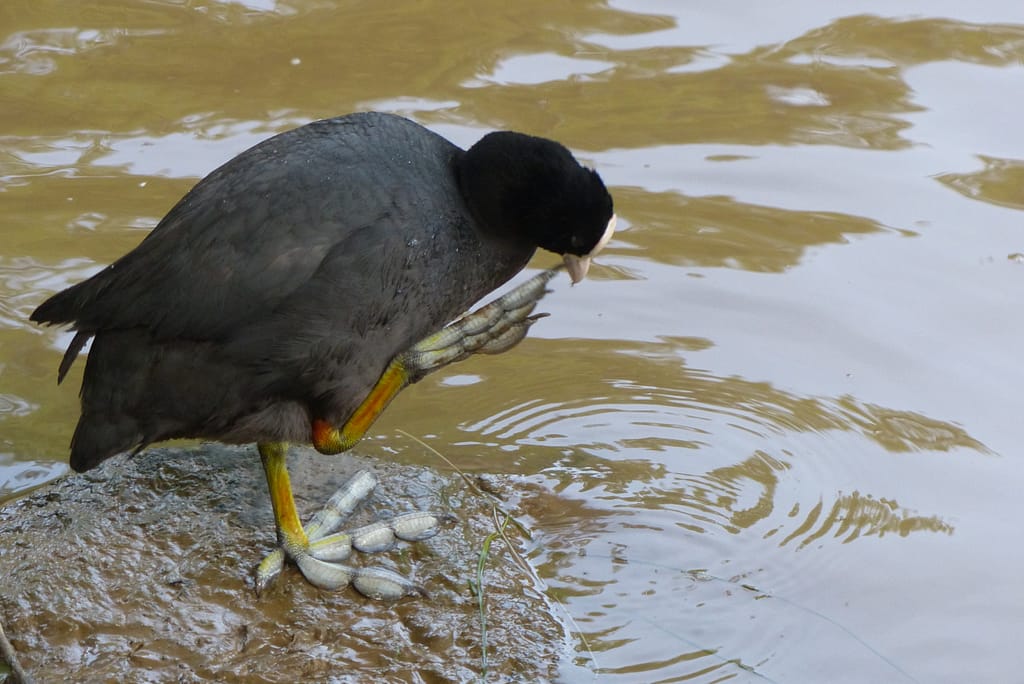If you follow the path through Tapijn along the Jeker every now and again, you can fully enjoy the life of the coot. The process of building of the nest, brooding, and the funny young coots can easily be observed from the footpath. The fierce battle between coots or between coots and other water and shore dwellers is a very impressive spectacle. They are real loudmouths.
Latin name: Fulica atra
Characteristics:
The common coot is a sturdy wetlands bird with plumage that is almost completely black. They have a pointed, white beak and a white blaze. Their legs are also striking; the leg itself is light green, but the ‘toes’ are lobed and light grey. Adult coots have red irises. Young coots that have just hatched are not much to look at. They have a bald head with a few grey feathers on it and some orange down in the face. Coots make various sounds, but most striking is the loud ‘yapping’ they make when defending their territory.
Coots are often confused with moorhens. Moorhens however are a lot smaller with a slimmer build, they have a brownish back and a white stripe in their wing feathers. In addition, moorhens have white undertail coverts, giving them a white area at the back when they walk (and sometimes when they swim). The most visible difference, however, is the beak. Moorhens have a red beak with a yellow tip and a red blaze. The legs of moorhens are less lobed than those of coots and are completely green.
Reproduction:
Coots’ breeding season runs from March to July. Their nests are often made of reeds and roots, but, in cities, coots are known for using of all kinds of waste as nest material. Coots regularly build their nests near each other, but they defend their territory fiercely against other coots. They have two to three clutches with 6 to 10 eggs per breeding season. After a nesting period of 21 to 25 days, the eggs hatch. The young coots can swim immediately and are fed by both parents. After about 56 days, the young coots can fly.
Diet:
Coots mainly eat aquatic plants. During the breeding season, however, the young are fed all manner of things, such as snails and fish. Coots also eat grass.

